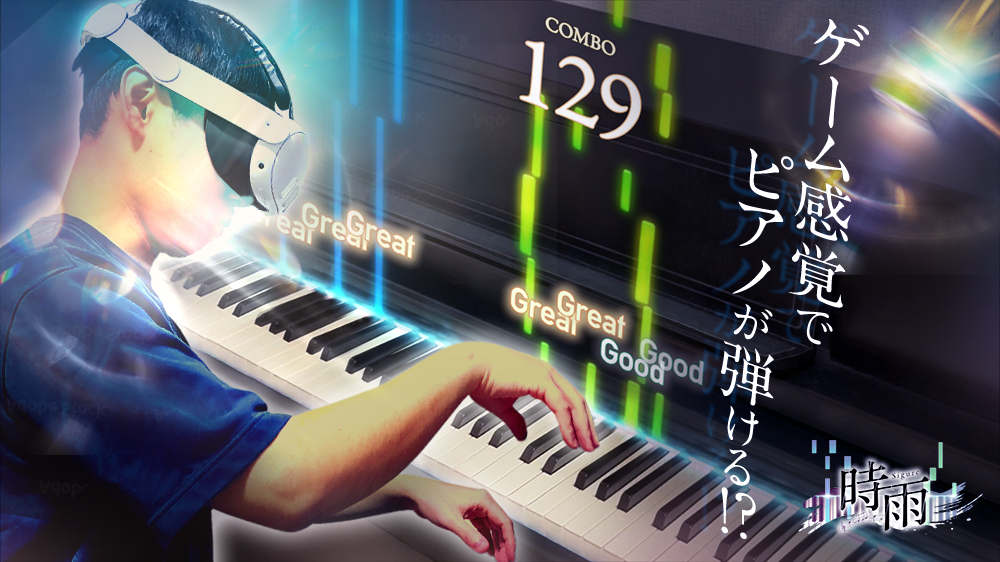Many people want to play famous classical pieces but aren’t sure which scores to choose, or are still searching for the right sheet music.
In this article, we introduce sheet music for 20 classical masterpieces.
- 20 Recommended Piano Scores of Classical Masterpieces
- Für Elise / Beethoven
- Ode to Joy / Beethoven
- Jesu, Joy of Man’s Desiring / J.S. Bach
- Turkish March / Mozart
- Turkish March / Beethoven
- Nocturne Op. 9 No. 2 / Chopin
- Minute Waltz / Chopin
- “Spring” from The Four Seasons / A. Vivaldi
- Gymnopédie No. 1 / Satie
- Arabesque / Burgmüller
- La chevaleresque (The Lady’s Ride) / Burgmüller
- Promenade I from Pictures at an Exhibition / M. Mussorgsky
- March from The Nutcracker / P.I. Tchaikovsky
- Canon / Pachelbel
- Boléro / M. Ravel
- Eine kleine Nachtmusik / Mozart
- Grande valse brillante / F. Chopin
- Flight of the Bumblebee / Rimsky-Korsakov, arr. Rachmaninoff
- Revolutionary Étude / F. Chopin
- Black Keys Étude / F. Chopin
- Why Piano Scores of Classical Masterpieces Are So Popular
- How to Choose Piano Scores of Classical Masterpieces by Purpose
- FAQ
- Summary
20 Recommended Piano Scores of Classical Masterpieces
Für Elise / Beethoven
A masterpiece that reflects the tender first love Beethoven felt in his youth. It’s approachable for beginners, and the melody shines when you let it sing with the pedal.
In practice, keep the right-hand triplets light and be mindful of balance with the left hand to achieve a refined sound.
Ode to Joy / Beethoven
An arrangement that lets you savor the famous melody from the climax of Symphony No. 9 as a solo piano piece.
Change the pedal as if taking a breath each phrase, and in the build-ups use a broad wrist to sing boldly.
Jesu, Joy of Man’s Desiring / J.S. Bach
A gentle hymn from Bach’s church cantata, where a calm melody rides over a soft accompaniment to soothe the heart.
Confirm the phrasing with hands separate, and keep the even eighth notes rocking like a cradle to evoke a serene church atmosphere. A healing piece beloved for ceremonies and wedding processionals.
Turkish March / Mozart
A lively march in A major full of exotic color.
Though short, it’s rich in contrasts and is popular at recitals.
Turkish March / Beethoven
A rousing march written as part of the incidental music to The Ruins of Athens.
A brilliant miniature that makes a striking opener for a concert.
Nocturne Op. 9 No. 2 / Chopin
A nocturne composed around Chopin’s twentieth year: the left hand’s broken chords depict night’s quiet, while the right hand sings a sweet melody with ornaments.
Create natural breathing with rubato, and change a shallow pedal to maintain clarity.
Minute Waltz / Chopin
A charming miniature in lively triple time, evoking a puppy’s wagging tail.
Rapid right-hand figures and left-hand jumps alternate, building finger agility.
“Spring” from The Four Seasons / A. Vivaldi
A fresh piano arrangement of a Baroque concerto masterpiece.
Motifs imitating birdsong alternate with harmonies that evoke the breath of spring.
Gymnopédie No. 1 / Satie
A piece like a quiet afternoon dream, with a gentle melody floating over a relaxed triple meter.
Placing each tone carefully creates its distinctive sense of floating.
Arabesque / Burgmüller
A lively miniature known as No. 2 from Burgmüller’s 25 Easy and Progressive Studies.
Delicate right-hand figures link like arabesque patterns, crossing with a left-hand staccato accompaniment.
La chevaleresque (The Lady’s Ride) / Burgmüller
A dazzling work that concludes Burgmüller’s 25.
A sprightly gallop rhythm carries an elegant melody, conjuring the image of a lady riding with grace.
Promenade I from Pictures at an Exhibition / M. Mussorgsky
The introduction depicting the composer himself walking through a memorial exhibition of his friend’s works.
The stately five-beat meter and folk-like melody trace the steps through a vast gallery.
March from The Nutcracker / P.I. Tchaikovsky
A brilliant march that colors the ballet The Nutcracker.
Its steady rhythm and bell-like chords convey the excitement of Christmas.
Canon / Pachelbel
On piano, smooth arpeggiated accompaniment is the key.
Keep the wrist relaxed and use a shallow pedal to maintain transparency.
Boléro / M. Ravel
An arrangement that condenses the orchestral work—built from a single melody and rhythm into a grand crescendo—into solo piano.
Keep the left hand’s rhythm steady while the right hand expands the register to build excitement.
Eine kleine Nachtmusik / Mozart
An arrangement that lets you enjoy one of Mozart’s iconic serenades at the piano.
You can learn the bright main theme and clear classical form; for right-hand staccato, release lightly from the fingertips for an elegant sound.
Grande valse brillante / F. Chopin
A glamorous waltz that mirrors the sparkle of high society.
A perennial favorite at recitals and competitions.
Flight of the Bumblebee / Rimsky-Korsakov, arr. Rachmaninoff
Rachmaninoff’s virtuosic arrangement of an operatic interlude.
Both hands race at high speed, depicting the buzzing wings of a bumblebee.
Revolutionary Étude / F. Chopin
An étude into which Chopin poured his passion, pained by turmoil in his homeland.
Storming left-hand octaves and a right-hand melody like a cry of the heart create intense drama.
Rotate a supple wrist to use arm weight efficiently, and keep pedal changes short to avoid muddiness.
Black Keys Étude / F. Chopin
A blazing étude where the right hand runs almost entirely on black keys—showcasing Chopin’s inventive brilliance.
Keep the bouncing theme light, and use the left-hand accompaniment to highlight the rhythm.

Why Piano Scores of Classical Masterpieces Are So Popular

- Timeless appeal across eras and nations
Works by Bach, Beethoven, Chopin, and others remain staples at concerts and entrance exams even after centuries. - Reliability as study material
Many pieces are ideal for fingering and technique practice, making it easy to gauge progress efficiently. - Rise of performance videos
Famous pieces have countless performance videos, inspiring listeners to try playing them.
How to Choose Piano Scores of Classical Masterpieces by Purpose

Free or paid?
- Free: Public-domain works whose copyrights have expired (e.g., IMSLP)
- Paid: With editors, fingerings, and commentary that boost learning efficiency
Assess the difficulty
- Beginner (around Burgmüller 25 level): Choose scores for hands-separate practice or easy arrangements
- Intermediate (Sonatina to early Sonata): Study original fingering and refine expressive ability
- Advanced (e.g., Chopin Études): Use urtext plus scholarly editions to deepen musicality
Arrangement or original?
- Original-focused: Aim for an orthodox performance
- Easy arrangements: Enjoy masterpieces even if your reach or finger speed is limited
Choose the format
- PDF: Instant access; easy to view on tablets
- Printed editions: Ideal if you like to write on paper; collectible
- Score apps: Auto-scroll and MIDI playback improve practice efficiency
FAQ

Q. Are there copyright issues with free sheet music?
A. Works that are 70 years past the composer’s death (public domain) can be downloaded for free. However, be careful when arrangements or editorial work add new copyrights.
Q. If I want to play a piece that’s too difficult, how should I practice?
A. The standard four-step path is: hands-separate at half tempo → hands together → sectional practice → full run at original speed. Keep your fingerings fixed and raise only the tempo.
Q. What screen size is best for reading scores on a tablet?
A. We recommend 10 inches or larger. If it’s smaller, print on A4 or A3 (two pages per sheet) for easier reading.
Summary
The 20 classical piano pieces introduced here are well-balanced from beginner to advanced levels, and all of them make a great impression in performance.
Start at a difficulty that suits you, and steadily expand your repertoire of playable pieces.




![[Free Sheet Music] Are There Two “Turkish Marches”? (Mozart / Beethoven)](https://vrpiano.co.jp/wp-content/uploads/2025/05/【無料楽譜】トルコ行進曲は2種類ある?モーツァルト-ベートーヴェン-320x180.png)








